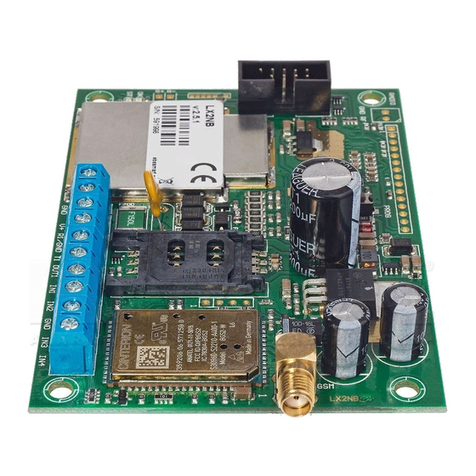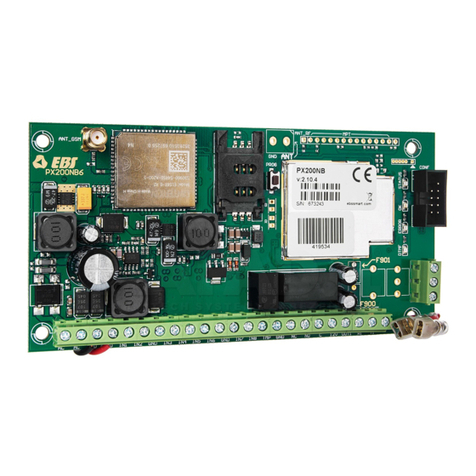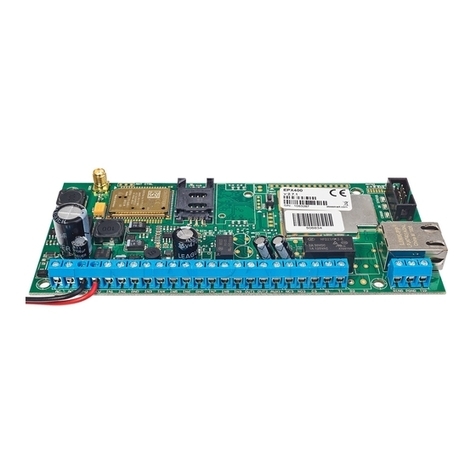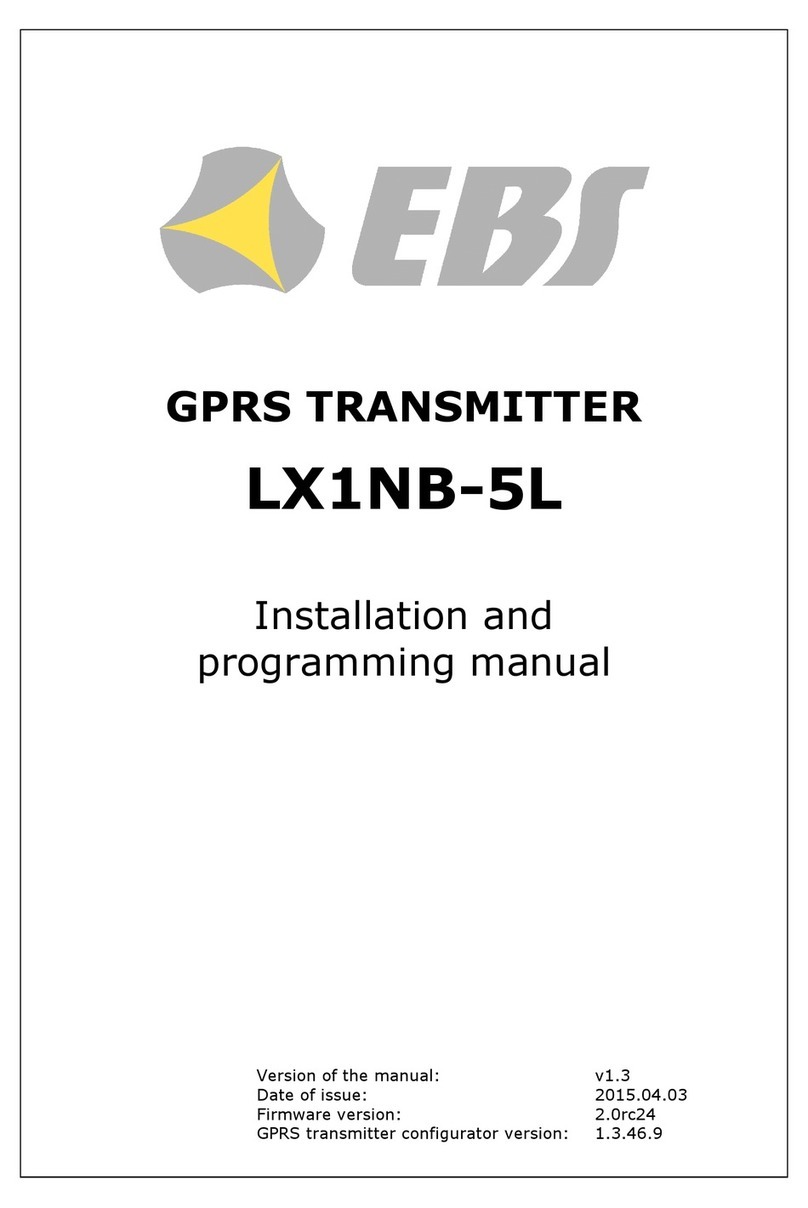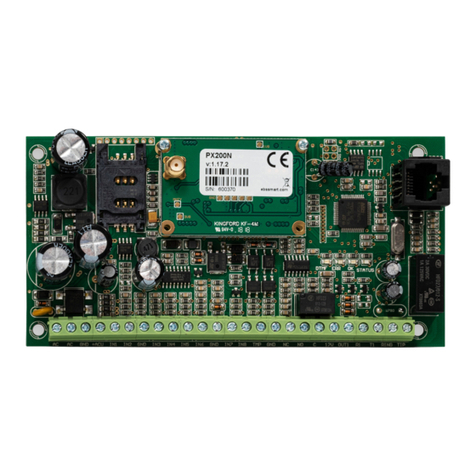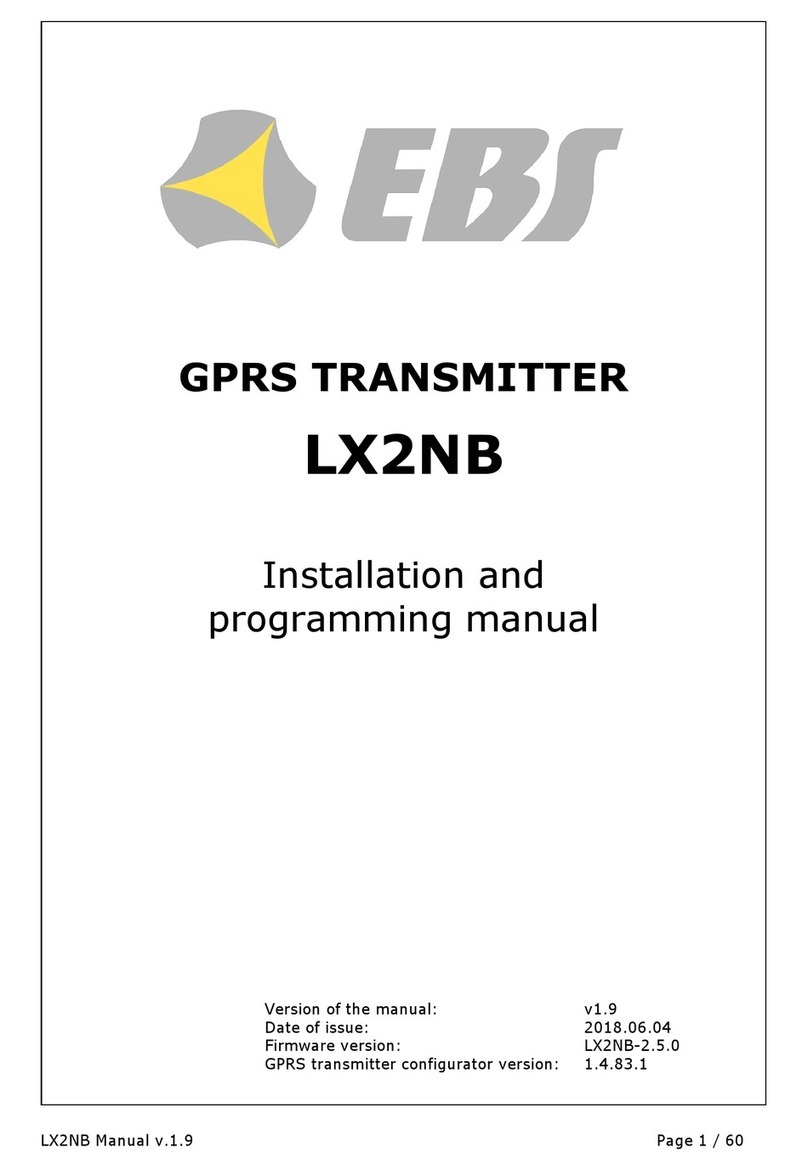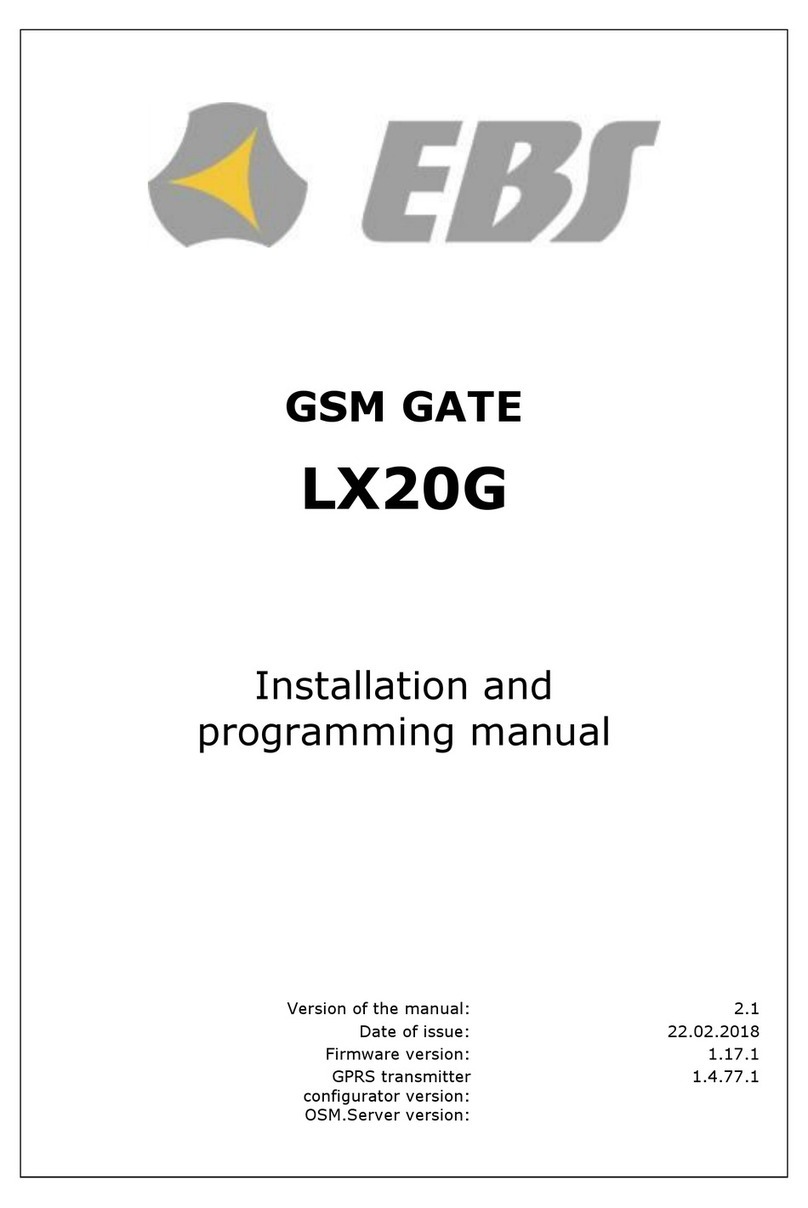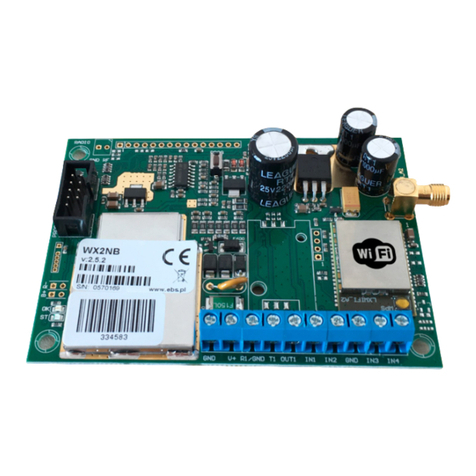
LX2N_Manual_en-1.11i66 Page 4 / 56
7.1.5.2. Restricted user’s service code ..................................................... 26
7.1.5.3. PIN of SIM card......................................................................... 26
7.2. TRANSMISSION...................................................................................... 26
7.3. INPUTS/OUTPUTS ................................................................................... 26
7.3.1. Inputs configuration ......................................................................... 27
7.3.1.1. NO/NC/EOL-NO/EOL-NC/DEOL-NO/DEOL-NC ................................ 27
7.3.1.2. Delay [ms] ............................................................................... 27
7.3.1.3. Lock ........................................................................................ 27
7.3.2. Partitions ........................................................................................ 29
7.3.2.1. Partition arming input ................................................................ 29
7.3.2.2. Inputs assigned to partitions ..................................................... 29
7.3.2.3. Delayed inputs.......................................................................... 29
7.3.2.4. Exit time .................................................................................. 30
7.3.2.5. Entry time ................................................................................ 30
7.3.3. Output 1(OUT1/TMP)........................................................................ 30
7.3.3.1. Activation mode and timing ........................................................ 30
7.3.3.2. Conditions ................................................................................ 31
7.3.3.3. Additional conditions.................................................................. 31
7.3.4. Advanced outputs control.................................................................. 31
7.3.4.1. Output 1/Output 2..................................................................... 32
7.3.4.2. Time of output activation ........................................................... 32
7.3.4.3. Event: Input 3 (RC) and Input 4 (RC) .......................................... 32
7.4. MONITORING ......................................................................................... 33
7.4.1. GPRS On / GPRS Off......................................................................... 33
7.4.2. SMS On / SMS Off............................................................................ 33
7.4.3. Skip initial state............................................................................... 34
7.4.4. Power loss ...................................................................................... 34
7.4.5. Event: Input 3 (RC) and Input 4 (RC)................................................. 34
7.5. RESTRICTIONS ...................................................................................... 34
7.5.1. SMS Authorized phones .................................................................... 34
7.5.2. GSM modems authorized phones ....................................................... 35
7.5.3. Validity period of outgoing SMS messages .......................................... 36
7.5.4. SMS limits....................................................................................... 36
7.6. SMS NOTIFICATIONS .............................................................................. 36
7.6.1. Phone numbers ............................................................................... 36
7.6.2. Events ............................................................................................ 37
7.6.3. SMS user tests ................................................................................ 38
7.6.4. Status ............................................................................................ 39
7.6.5. SMS Forward................................................................................... 40
7.7. LINK CONTROL....................................................................................... 41
7.7.1. GSM............................................................................................... 41
7.7.2. GPRS.............................................................................................. 42
7.8. PHONE LINE........................................................................................... 42
7.8.1. Phone line....................................................................................... 43
7.8.1.1. Report off-hook condition ........................................................... 43
7.8.1.2. Report “intervals too long” ......................................................... 43
7.8.1.3. Generate dial tone..................................................................... 43
7.8.2. First and Second phone number ........................................................ 44
7.8.2.1. DTMF phone number ................................................................. 44
7.8.2.2. Handshake delay....................................................................... 44
7.8.2.3. Protocol ................................................................................... 44
7.9. FIRMWARE ............................................................................................ 45
7.10. DEVICE MONITOR ............................................................................... 47
7.11. EVENTS HISTORY................................................................................ 47
8. DEVICE PROGRAMMING.................................................................................. 50
8.1. LOCAL PROGRAMING .............................................................................. 50
8.2. REMOTE PROGRAMMING ......................................................................... 50
8.2.1. The first programming of device ........................................................ 51
8.2.2. Reprogramming of device ................................................................. 51
